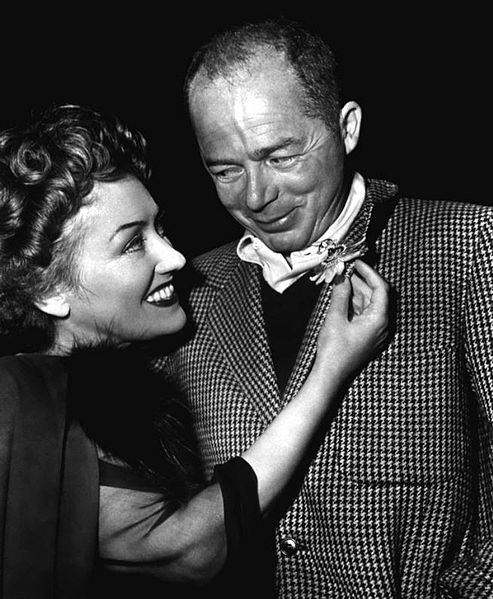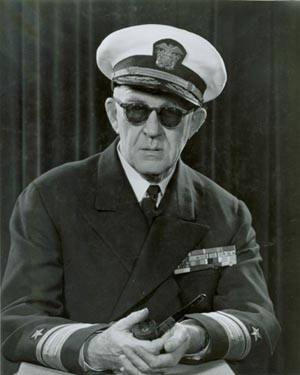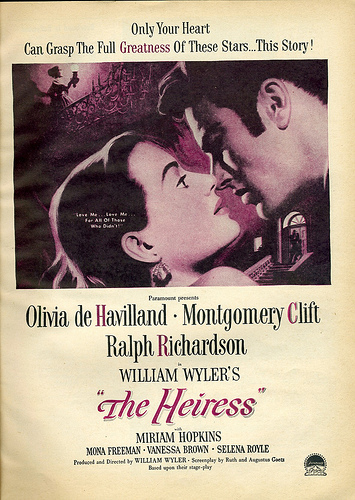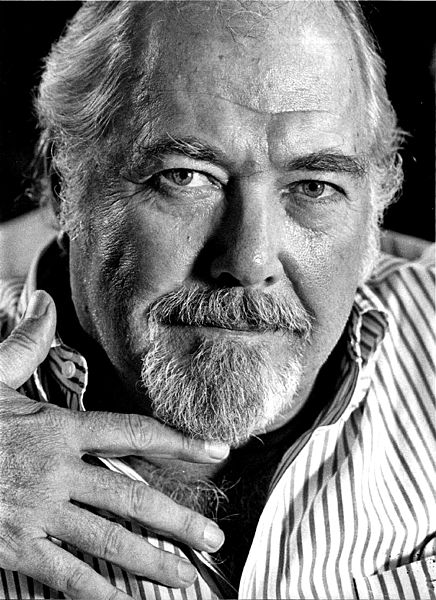Director Robert Altman made more than thirty feature films and dozens of television episodes over the course of his career. The Altman retrospective currently showing at MoMA is a treasure trove for rediscovering Altman’s best known films (M*A*S*H, Nashville, Gosford Park) as well as introducing unreleased shorts and his little-known early work as a writer.
Every Altman fan has her or his own list of favorite films. For me, Altman’s use of music is always so innovative, original, and unprecedented that a few key films stand out from the crowd based on their soundtracks. Here are my top five Altman films based on their soundtracks:
1. Gosford Park (2001): The English heritage film meets an Agatha Christie murder mystery, combining an all-star ensemble cast and gorgeous location shooting with a tribute to Jean Renoir’s La Règle du Jeu (1939). Jeremy Northam plays the real-life British film star and composer Ivor Novello. Watch for the integration of Northam/Novello’s live performances of period songs with the central murder scene, in which the songs’ lyrics explain (in hindsight) who really committed the murder, and why.
2. Nashville (1975): Altman’s brilliant critique of American society in the aftermath of Vietnam and Watergate. Nashville stands as an excellent example of “Altmanesque” filmmaking, in which several separate story strands merge in the climactic final scene. Many, although not all, of the songs were provided by the cast, which includes Henry Gibson as pompous country music star Haven Hamilton, and the Oscar-nominated Lily Tomlin as the mother of two deaf children drawn into a relationship with sleazy rock star Tom Frank (Keith Carradine, whose song “I’m Easy” won the film’s sole Academy Award).
3. M*A*S*H (1970): Ok, I will admit it. It took me a long, long time to appreciate M*A*S*H. Growing up in 1970s Toronto, I couldn’t accept Donald Sutherland and Elliot Gould as Hawkeye Pierce and Trapper John — familiar characters from the weekly CBS TV series (but played by different actors). Looking back, I realize that M*A*S*H really did break all the rules of filmmaking in 1970, not least of which because it appealed to the anti-Vietnam generation. Like so many later Altman films, what appears to be a sloppy, improvised, slap-dash film is in fact sutured together through the brilliant, carefully edited use of Japanese-language jazz standards blared over the disembodied voice of the base’s loudspeaker.

4. McCabe and Mrs. Miller (1971): Filmed outside of Vancouver, Altman’s reinvention of the Western genre stars Warren Beatty and Julie Christie. The film uses several of Leonard Cohen’s songs from his 1967 album The Songs of Leonard Cohen, allowing the songs to speak for often inarticulate characters. Watch for how the opening sequence, showing Beatty/McCabe riding into town, is closely choreographed to “The Stranger Song” as is Christie/Miller’s wordless monologue to “Winter Lady” later in the film — all to the breathtaking cinematography of Vilmos Zsigmond, who worked with Altman on Images (1972) and The Long Goodbye (1973) as well.
5. Aria (segment: “Les Boréades”) (1987): Made during Altman’s “exile” from Hollywood in the 1980s, this film combines short vignettes set to opera excerpts by veteran directors including Derek Jarman, Jean-Luc Godard, and Julien Temple. Altman’s contribution employs the music of 18th-century French composer Jean-Philippe Rameau. The sequence was a revelation to me personally, since it contains the only feature film documentation of Altman’s significant contributions to the world of opera. One of the first film directors to work on the opera stage, Altman directed a revolutionary production of Stravinsky’s The Rake’s Progress at the University of Michigan in the early 1980s: the work was restaged in France and used for the Aria Later, Altman collaborated with Pulitzer-Prize winning composer William Bolcom and librettist Arnold Weinstein to create new operas (McTeague, A Wedding) for the Lyric Opera of Chicago.
Rounding out the top ten would be Short Cuts (1993), Kansas City (1996), The Long Goodbye (1973), California Split (1974), and Popeye (1980) — Robin Williams’ first film, and definitely an off-beat but entertaining musical.
Headline Image: Film. CC0 via Pixabay
The post Top five Robert Altman films by sound appeared first on OUPblog.

Today, 11 May, marks the anniversary of the founding of the Academy of Motion Picture Arts and Sciences in 1927. It wouldn’t be until 1928 until the award selection and nomination process was established, but this elite group of actors, directors, writers, technicians, and producers were leaders in the early film industry.
As a throwback to old Hollywood, we’ve rounded up five of our favorite American classic film directors from the American National Biography who have been recognized by the Academy as iconic. Whose style is your favorite?
Described as: “Witty, with a devilish sense of humor.” It has been said of Wilder films that audiences are never allowed to believe that all will be well ever after; they are presented with flawed people who will continue to struggle.
Best known for: Sunset Boulevard (1950), Sabrina (1954), Some Like It Hot (1959), The Apartment (1960)
Most underrated movie: Witness for the Prosecution (1957) a suspense thriller that pays tribute to Alfred Hitchcock
You may be surprised to learn that: “In his 20s, Wilder wrote numerous scenarios for Berlin’s silent-film industry, and his skill at dancing landed him a stint as a hired dance partner for older women. Wilder made the most of his years in Berlin, seeking out the company of prominent writers and artists like Thomas Mann, Bertolt Brecht, George Grosz, Fritz Lang, Hermann Hesse, and Erich Maria Remarque, whom he saw daily at a celebrated bohemian hangout, the Romanisches Café.”
Oscar Nominations for Best Director: 8
Oscar Wins for Best Director: 2

Studio publicity photo of Billy Wilder and Gloria Swanson, circa 1950. Public domain via Wikimedia Commons.
Described as: An artist. As John Wayne said “When he pointed that camera, he was painting with it.” Ford’s films were characterized by a strong artistic vision and frequently contained panoramas of magnificent outdoor settings that rendered the human actors almost insignificant.
Best known for: Stagecoach (1939), The Grapes of Wrath (1940), How Green Was My Valley (1941), The Searchers (1956)
Most underrated movie: They Were Expendable (1945)
You may be surprised to learn that: “Throughout his career Ford tended to work with the same group of people again and again, as actors, writers, stagehands, and cameramen. He was known for his non-ostentatious dress, and he frequently had both a drink and a cigar with him on the set. He wore a black patch over one eye, which had been injured in an accident during the 1940s.”
Oscar Nominations for Best Director: 5
Oscar Wins for Best Director: 4

Director John Ford, who was also a Rear Admiral in the Navy Reserve, 1952. US Navy. Public domain via Wikimedia Commons.
Described as: “Hollywood’s most sought-after director of the 1930s.” He is cited as establishing the screwball comedy as a genre, though his subsequent films, focused on more serious social or historical issues, and revolved around a formula: “an honest and idealistic hero encounters problems from corrupt men and institutions but ultimately prevails.”
Best known for: It Happened One Night (1934), Mr. Smith Goes to Washington (1939), It’s a Wonderful Life (1947)
Most underrated movie: Meet John Doe (1941)—produced with an independent filmmaker, after a dispute with the Hollywood studios about directors having artistic control over their work
You may be surprised to learn that: The Christmas classic It’s a Wonderful Life was Capra’s personal favorite, although it was initially unpopular with both critics and the public.
Oscar Nominations for Best Director: 6
Oscar Wins for Best Director: 3

Frank Capra cuts Army film as a Signal Corps Reserve major during World War II, circa 1943. US Army. Public domain via Wikimedia Commons.
Described as: “Having a sympathetic approach to performance and an ability to create focused, dramatic moments.” He was praised for his careful handling of potentially incendiary themes and characters.
Best known for: Wuthering Heights (1939), The Best Years of Our Lives (1946), Roman Holiday (1953), Ben-Hur (1959) Funny Girl (1968)
Most underrated movie: The Children’s Hour (1961)
You may be surprised to learn that: With the United States in WWII in 1942, Wyler volunteered to make films for the armed forces. As an army major (later, lieutenant colonel), he produced two 16mm color films under combat conditions, serving as one of his own cinematographers (he ended the war permanently deaf in one ear as a result). The more notable of the two, Memphis Belle (1944), documented a B-17 bomber’s twenty-fifth and final mission over Germany
Oscar Nominations for Best Director: 12
Oscar Wins for Best Director: 3
Described as: “Idiosyncratic” and “iconoclastic”. His directorial style is known for its episodic storytelling, overlapping dialogue, and frequent improvisation.
Best known for: M*A*S*H (1970), Nashville (1975) and, more recently, The Player (1992)
Most underrated movie: Gosford Park (2001)
You may be surprised to learn that: The mellowness of A Prairie Home Companion may have reflected Altman’s recognition and final acceptance of mortality. Already suffering from cancer at the time of its release, he had been in precarious health since undergoing a heart transplant a decade earlier
Oscar Nominations for Best Director: 5
Oscar Wins for Best Director: 0 (But M*A*S*H was recognized for best screenplay)
Discover the lives of more than 18,700 men and women – from all eras and walks of life – who have influenced American history and culture in the acclaimed American National Biography Online. To supplement the thousands of biographies, many of which feature an image or illustration, Oxford is proud to announce a partnership with the Smithsonian that makes nearly 100 portraits from the National Portrait Gallery available to ANB users.
Subscribe to the OUPblog via email or RSS.
Subscribe to only American history articles on the OUPblog via email or RSS.
The post Unknown facts about five great Hollywood directors appeared first on OUPblog.

This Day in World History
February 28, 1983
Final Episode of TV Series M*A*S*H Airs
On February 28, 1983, at the end of its eleventh season, M*A*S*H said goodbye to television. More than 105 million Americans in about 51 million homes watched the series finale, a two-and-a-half-hour-long movie directed by star Alan Alda, that featured the show’s characteristic blend of comedy and drama.
M*A*S*H debuted in 1972, two years after the release of the Robert Altman movie of the same name and four years after the publication of the Richard Hooker novel that was the original for both. Set in a mobile army surgical hospital during the Korean War, the show featured an ensemble cast that included three regulars — Alda as doctor “Hawkeye” Pierce, Loretta Swit as chief nurse Major Margaret Houlihan, and William Christopher as chaplain Father Mulcahy — who appeared in all eleven seasons.

In its first few seasons, the show’s Korean War setting made it a commentary of sorts on the Vietnam War. Even after Vietnam ended, the series examined the tragic personal cost of war and the extent to which people will go to try to maintain sanity in war. The last episode, set around the close of the Korean War, included storylines reinforcing those themes.
The show made several innovations, including use of multiple storylines in an episode, the mixture of comedy and drama, the way the camera was used to shoot scenes, and the fact that the characters developed over time.
M*A*S*H remains one of the most highly regarded of all television series. Though the records the final episode once held for number of households tuning in and total number of viewers have been surpassed by Super Bowl broadcasts, that last show remains the single most watched episode of a television series in US history. Its Neilsen rating of 60.2, which means that more than three-quarters of all televisions were tuned to it, makes it the highest-rated television show of any kind.
“This Day in World History” is brought to you by USA Higher Education.
You can subscribe to these posts via RSS or receive them by email.


Popeye the Sailor man began life at the pen of Elzie Crisler Segar in 1929. Now the spinach-eating icon is making his return to the comics with a new book coming out next year from IDW Publishing.
The new comic book, which will hit bookshelves next year, will also feature some of Popeye’s well known friends. The Washington Post reports: “IDW co-founder and chief executive Ted Adams says the sailor with the bulging forearms will be have his own monthly series that will feature Olive Oyl, big and blustery Bluto along with hamburger-craving Wimpy and baby Swee’Pea, too.”
Various artists have adapted the comic in their own ways over the years including filmmaker Robert Altman in his film Popeye (the trailer is featured above). The new book will return the cartoon to Segar’s original style.
New Career Opportunities Daily: The best jobs in media.










